Are you starting a new weaving project but you’re not sure where to start or what information you need… or how to figure out all those numbers? How do you actually plan your weaving?
You’re not the only one.
Figuring out how to plan your weaving is an essential skill that all weavers need to have.
There are definitely certain things that you need to know or consider when you are planning your weaving. Some of these may be determined for you depending on the materials you have on hand – but others require some research and even a little math.
Now, I have already covered some of these topics in more depth in other blog posts – so if you missed those then make sure to check them out. I will link all of them in each section so you can have them in one place!
First, if you are new to weaving then check out 12 Weaving Terms Every Weaver Should Know!
Research your weaving ideas
Not everyone needs to do research before creating their weavings – but it’s definitely something that I do on an ongoing basis for my tapestries. I like to research different rock patterns, formations, and places. This research helps me to choose colors, patterns, titles, and other aspects of my artwork. I add this research to my sketchbook to look back on.
If you do need to do research then yours might include things like the best loom to use or the perfect yarn for your scarf. Your research could also look like gathering inspiration with images on your cork board or pins on pinterest for shapes, colors, patterns, or designs.
Either way, this is one of the best places to start when planning a weaving. It can help you determine other parts of your weaving.
What is your weaving type?
Are you planning to weave up tapestry? Looking to make a rag rug? Interested in creating a new scarf?
All of these different types of weavings are going to have different things you need to consider and plan for. This will determine your EPI, materials you use, size, and pretty much everything else.
It also helps to know what kind of weavings you want to create when you are first learning. This will help you to know what to focus on as far as techniques go. If you are only planning to weave scarves or fabric yardage – then you may not need to learn tapestry techniques. At least not right away.
One of the things that makes weaving so amazing is that there are so many different types of weavings that you can choose from!
Or you can learn them all!
What is your weaving loom type?
The type of loom that you are going to create your weaving on can have a huge impact on the weaving itself. Some looms are just better at making certain types of weavings!
Not everybody has more than one loom to choose from when it comes to creating their work and that’s ok! A lot of looms CAN do double duty and create different types of weavings with some thought and care.
(If you are ready to buy a second loom then check out my post on choosing looms that work well together.)
If you only have a frame loom or you only have a rigid heddle loom then you might just have to get a little creative.
For example: rugs are best woven on heavy looms that can apply enough force to beat the weft. This will create sturdy rugs that can hold up to wear and tear.
Also, scarves are easier to weave when you have a loom that allows you to advance your warp. If you do not have an advancing loom you could weave a patchwork scarf on a frame loom by connecting woven panels together. Not a bad idea…
Simple frame looms are my favorite loom for beginners because they allow you to try out a lot of different things with little to no loom cost.
They are great for everyone – I use mine all the time, despite having many different types of looms.
What is your weaving size?
Again, this may not be something that is completely up to you. You may only have a small loom that limits the max size your weaving can be.
Don’t worry. There may be a workaround!
If you want a wider weaving than your floor or table loom allows then you can weave double weave and only attach the fabric on one side. This will double the width of the finished piece.
You also have the option of weaving up multiple smaller weavings and attaching them together. This will work regardless of the loom you are using.
Or you can let your max loom size inspire you to create multiple smaller pieces and have a weaving triptych! Use the technique above to create a patchwork weaving
You don’t have to be limited by what you have! Use it to your advantage to try out new things and expand your weaving repertoire. Overcoming things like this and making the most of it are what make you a better weaver.
Warp density (EPI) plays a major role in your weaving
Which stands for Ends Per Inch and can also be referred to as warp sett is how you determine the spacing between your warps. A.K.A. your warp density. It can be called so many different things.
No matter what you call it – EPI is so IMPORTANT!
Did you read my EPI post?
No?
Check that out if you are struggling to figure out your warp sett for your weaving or if you don’t know why it’s so important!
Here’s a quick run-down: your EPI is what determines how your weaving will weave up. Tapestry will weave up with a different EPI than pattern or balanced weave. Depending on the yarn you choose this could be different for every weaving. This is because tapestry needs enough space between each warp for the weft to compress fully and cover the warp completely.
Pattern and balanced weave don’t need this much space.
Use your mini-loom or check out the yarn manufacturers recommended warp sett when you plan your weaving so you can determine what the correct EPI is before you get started.
Choose the right warp yarn
Choosing the correct warp for your weaving project is more than what looks good.
Although that can be a big factor.
It can also keep you from having to fix broken warps in the future or keep your warps from sticking together if they’re not smooth.
It also helps to determine how your weaving will or won’t drape.
Read all about Choosing The Right Warp For Your Project.
Weft yarn is a little simpler
Technically speaking weft can be anything. Depending on the type of weaving you are creating though weft shouldn’t just be anything.
Some weft considerations:
Will it be handled/ worn?
Does it need to be washed?
Do you want it to drape?
Will it be walked on (like a rug)?
Or is it needed for warmth (like a blanket)?
Will it deteriorate over time? (organic material like flowers)
All of these things will help you determine what will or will not be an appropriate material to use for weft. If you’re not sure how to answer some of these questions – a sample will help with that.
If you’re looking for where to buy your yarn you can check out the online yarn store post!
How much yarn do you need?
If you are trying to figure out how much yarn you need to purchase then I recommend going to this site. It’s the one I use and it does all the math for you! All you have to do is input your weaving parameters (size, EPI, etc.) and it will tell you just how many yards you will need to have or purchase.
Some of the parameters that it’s asking for may not sound familiar or they may not apply to your weaving.
There are probably 3 of these areas that may trip you up:
Shrinkage, Take-Up, and Draw-In.
So let’s go over them!
Ahhh! Weaving shrinkage must be accounted for
Determined by making a sample and washing it. Shrinkage probably won’t apply to non-functional weavings like tapestries that won’t be washed after completing it. In that case you can input 0 if you are using the link above or just leave it out completely if you are calculating manually.
Keep in mind that things like washing with different detergents, the amount of agitation you use, and the way you dry the weaving can all affect the shrinkage – so make sure to be consistent and take notes!
To find your shrinkage percentage, make sure to measure the sample before and after washing. Subtract the smaller size from the larger size and then divide that number by the original size.
Example
We have a sample that measures 5″ x 5″ before it is washed. After washing – the same sample now measures 4.5″ x 4.5″.
5-4.5 = .5
.5/5 = .1 or 10% shrinkage (10% in general is probably pretty safe)
Weavings will draw-in
Your weaving will inevitably draw-in (or pull-in at the sides) at least a little bit when weaving up pattern or balanced weave. This is the case even if you take into account the measures you can use to get straighter selvedges. (check out my tutorials!)
Using your sample you should be able to measure your draw-in by taking the original width and subtracting your finished width.
You always want to do your best to reduce your draw-in. Not only for the look of the weaving, but also to keep a consistent EPI all the way across and to not put extra stress on your warp (this could lead to breakage!)
Draw-in is usually around 1-2″, but make sure to sample to check yours!
Weft take-up
This is the parameter that accounts for the extra warp and weft needed due to the interaction of the 2. In other words, the slack that is needed to try to keep the weaving from drawing-in.
If you look at the diagram below you can see that the woven weft and the non-woven weft take up the same amount of space, but if you were to stretch out the woven weft it would be longer because of the extra slack it takes to go around the warp.
Generally speaking you can probably just say this will be 10% and be safe.
Try It Out!
In case you want to figure it out yourself – or at least better understand where the numbers are coming from let’s walk through an example.
Example #1
I want to weave a scarf that is 6 ft long (or 72″ not including fringe) and 10″ wide.
Warp Length:
Fringe – 6 ” x 2 (top and bottom) = 12″
Shrinkage -10% (72″ + 12″ x.1) = 8.4″
Take-Up – 10% = 8.4″
Loom waste – 1 yard (36″)
Total warp length (add everything up) = 136.8″ or 3.8 yards
Warp Ends:
EPI – 24
Draw-In – 1″
Shrinkage – 10% = 1″
Total width = 12″
Total warp ends – (12″ x 24 EPI) = 288
Total warp needed – 288 x 136.8 = 39,398.4″ or 1094.4 yards of warp
Weft Needed
Width of weaving – 12″
Take-up – 10% (rounded) = 1″
Length of one shot of weft – (width + take-up) = 13″
PPI (if balanced then same as EPI – if not, then count wefts per inch of your sample) – 24
*More about PPI in THIS post.
Weft per inch of weaving – (PPI x one weft shot) = 312
Total weft – (length of warp 136.8 x weft per inch 312) = 42,681.6″ or 1,185.6 yards of weft
*To get yards from inches – just divide by 36*
Whew! That’s a lot of math!
Finishing your weaving
Yes, when you plan your weaving you need to consider finishing from the BEGINNING. This is because there are certain finishing techniques that require you to add a little extra to the beginning and end of your weaving.
You also need to consider this because it can help you determine what warp you are going to use. Are you going to see the warp? If that’s the case you need to make sure that you like it enough for it to play a visible role in the weaving.
One of my favorite finishing techniques for tapestry can be shown in process in the image above. I weave about an inch of balanced weave at the beginning and end of my weaving and fold them under when it’s done!
This allows for a clean edge where you can’t see the warp at all. By using balanced weave, you add very little bulk to the weaving. If you want to do this method – you need to plan for it. You will have to consider the extra few inches into your overall warp length and amount of yarn needed for your project.
Also, don’t forget to weave in your weft ends!
Weaving display
I’m not going to lie – sometimes I’m not great about determining my display methods before I start my artwork.
Luckily, your weaving may determine the display for you.
Rug weaving?
You can probably guess how it will be displayed.
One thing you may have to consider is if you want to use a dowel rod then you need to make sure you have some extra warp to use around the rod. You could also use some extra yarn that matches your weft to attach it.
I went over 5 Weaving Display Alternatives to the dowel rod in a previous post – so if you need some other ideas – check that out!
Where to ACTUALLY start in the weaving process?
A lot of these things build upon each other, so you might start at a different point in the checklist than somebody else. Since your loom type can determine the type of weaving you can make you might have to start there. If you are just starting out and looking to buy a loom – then you need to know the type of weaving you want to make first!
If you are planning your weaving around a specific yarn that you have a finite amount of… well that helps you determine your size!
To figure out where you should start – figure out what is the most important part of the weaving to you. What is the one thing you can’t control?
Then, plan around it.
No matter where you are in your weaving planning – these are all things that should be considered before you get to the really good part.
Where do you start your weaving planning? Let me know in the comments!
⇣ Love It? Share It! ⇣
You May Also Like


















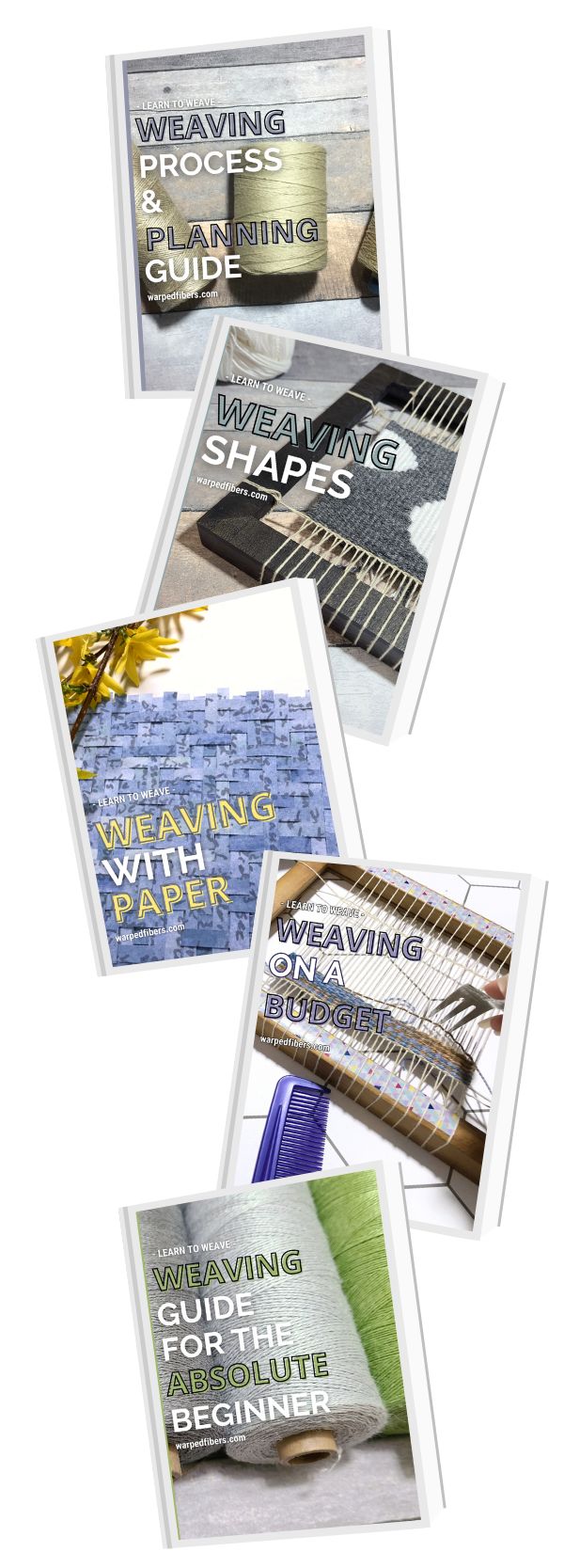
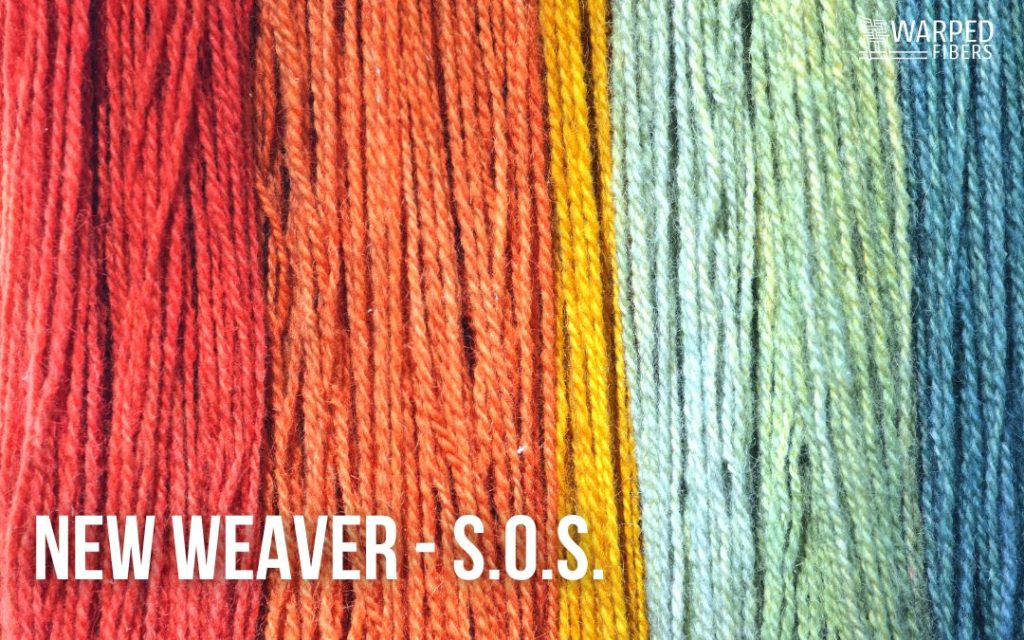

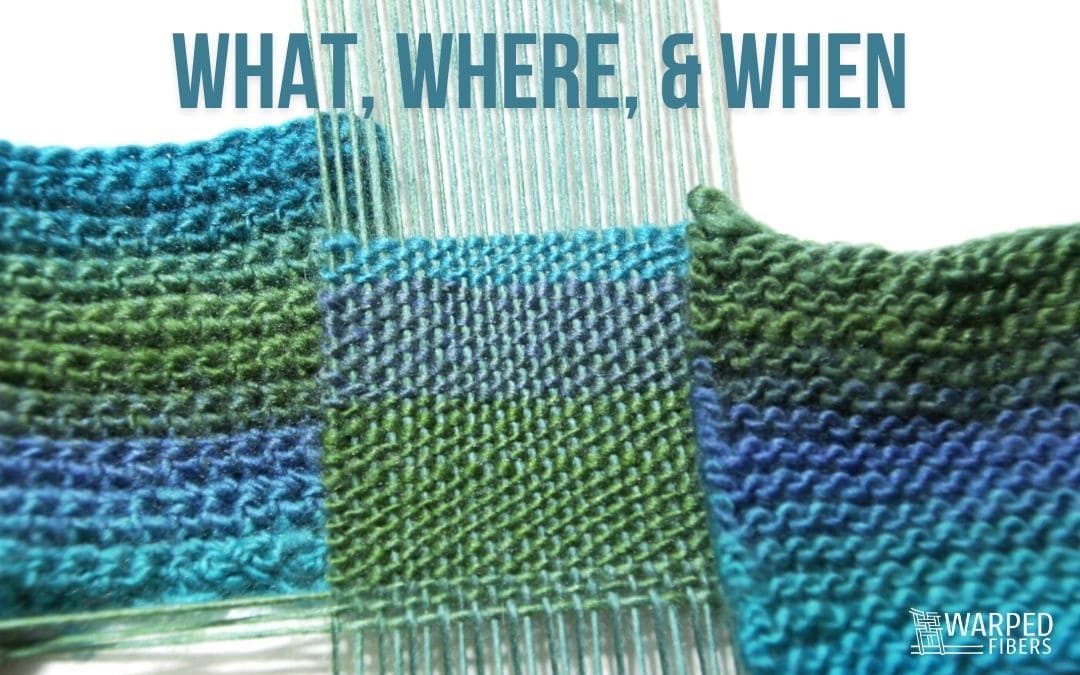

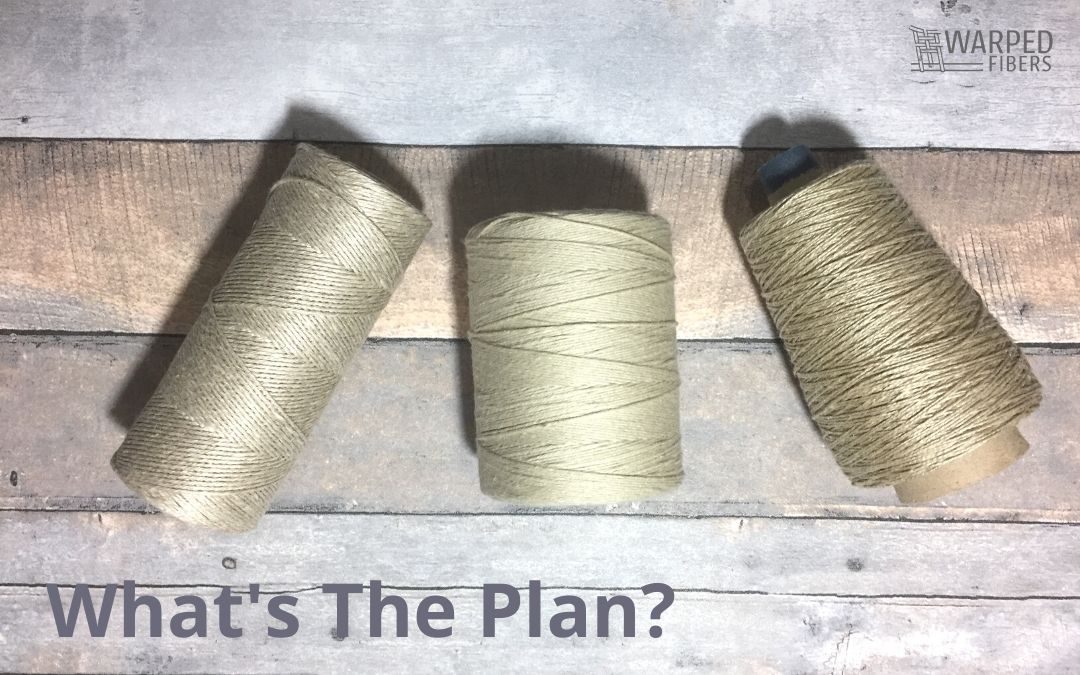

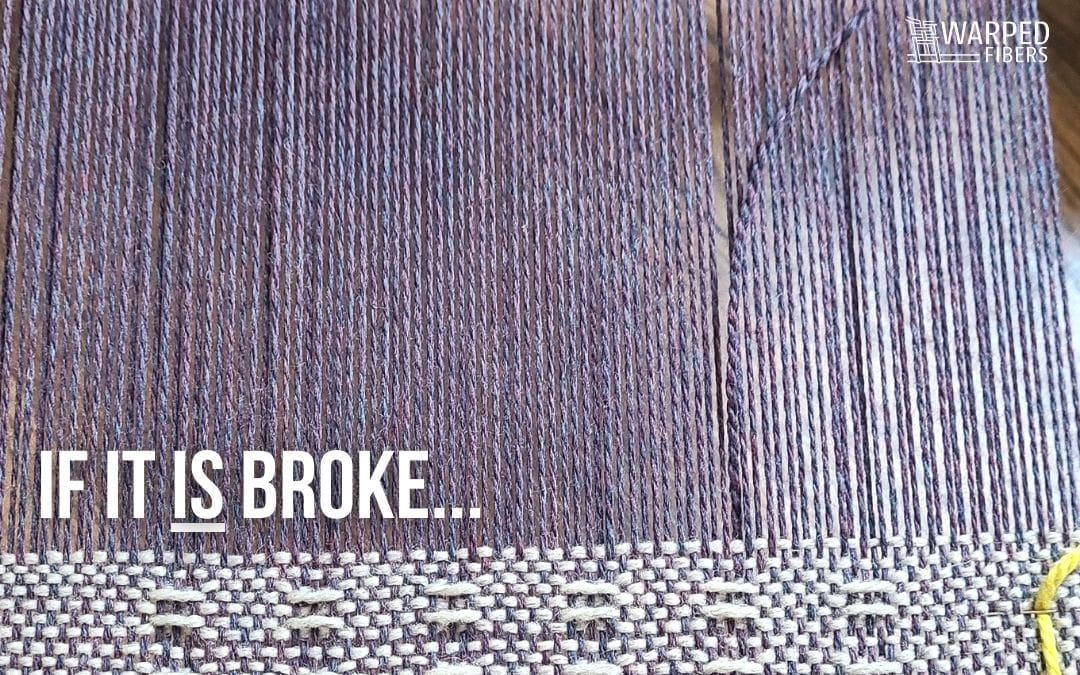

I start my process with the yarn, how it feels,what color or colors in it. Then I search for another yarn to go with it. My collor wheel comes out as in thinking also what kind of clothing I want to make.
I really appreciate the clarity of these blogs. I have already begun using some of your ideas
One question given I use a simple frame has to do with describing what a double weave looks like and how to execute one
Thank you! That is so great to hear!
Double weave involves having 2 sets of warp on the same loom where you would weave a row on one layer and then a row on the next. To double the width you would attach the weaving on either (but only 1) selvedge and open it up off the loom when done.
I have previously never attempted this on a frame loom of any kind, but it can be possible if you flip the frame back and forth while weaving font and back. You will need double the warp threads to maintain the correct EPI on front and back. I recommend you separate the front and back warp by placing a shed stick (or even some thick paper) between them so that it’s less confusing. Just make sure to flip your frame while the weft is at the same selvedge or it won’t open back up. I just tried this out on a sample and it can work! Maybe this is a future blog post!
If you need more explanation or some photos you can email me: [email protected] 🙂 I hope this helps!